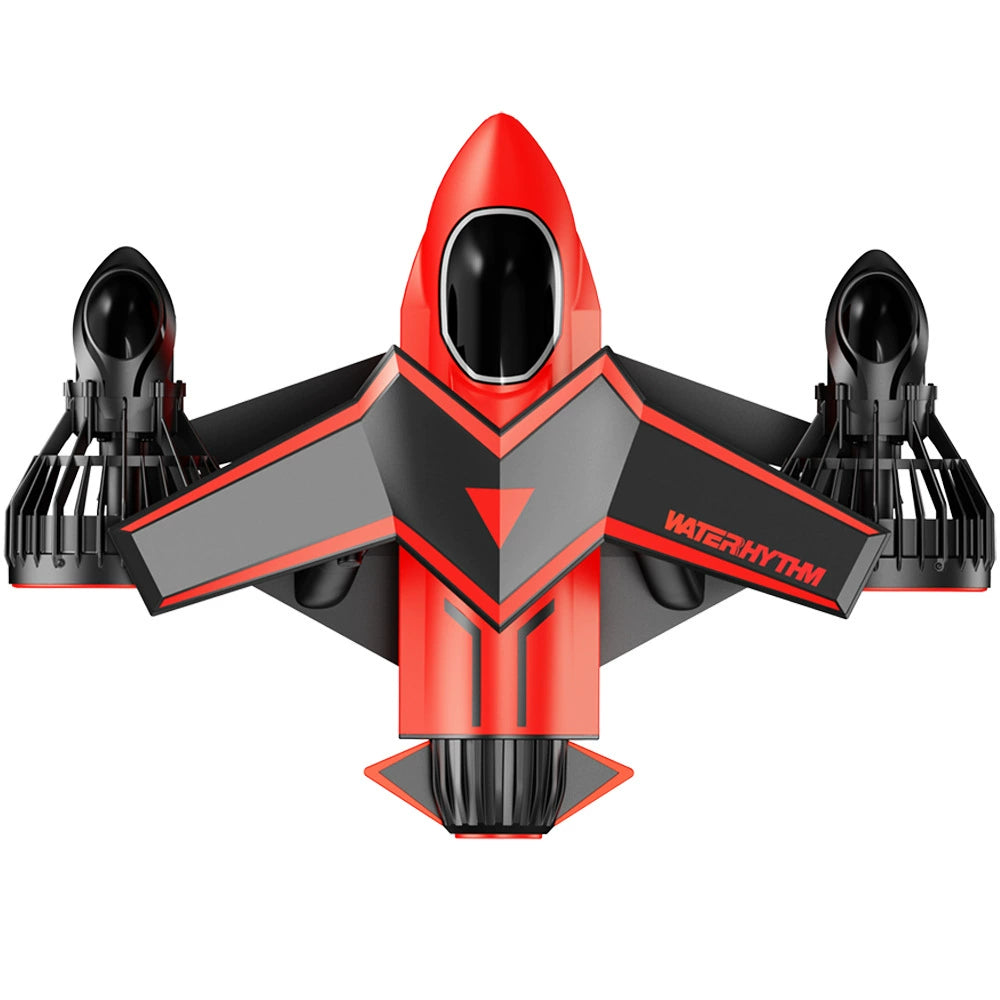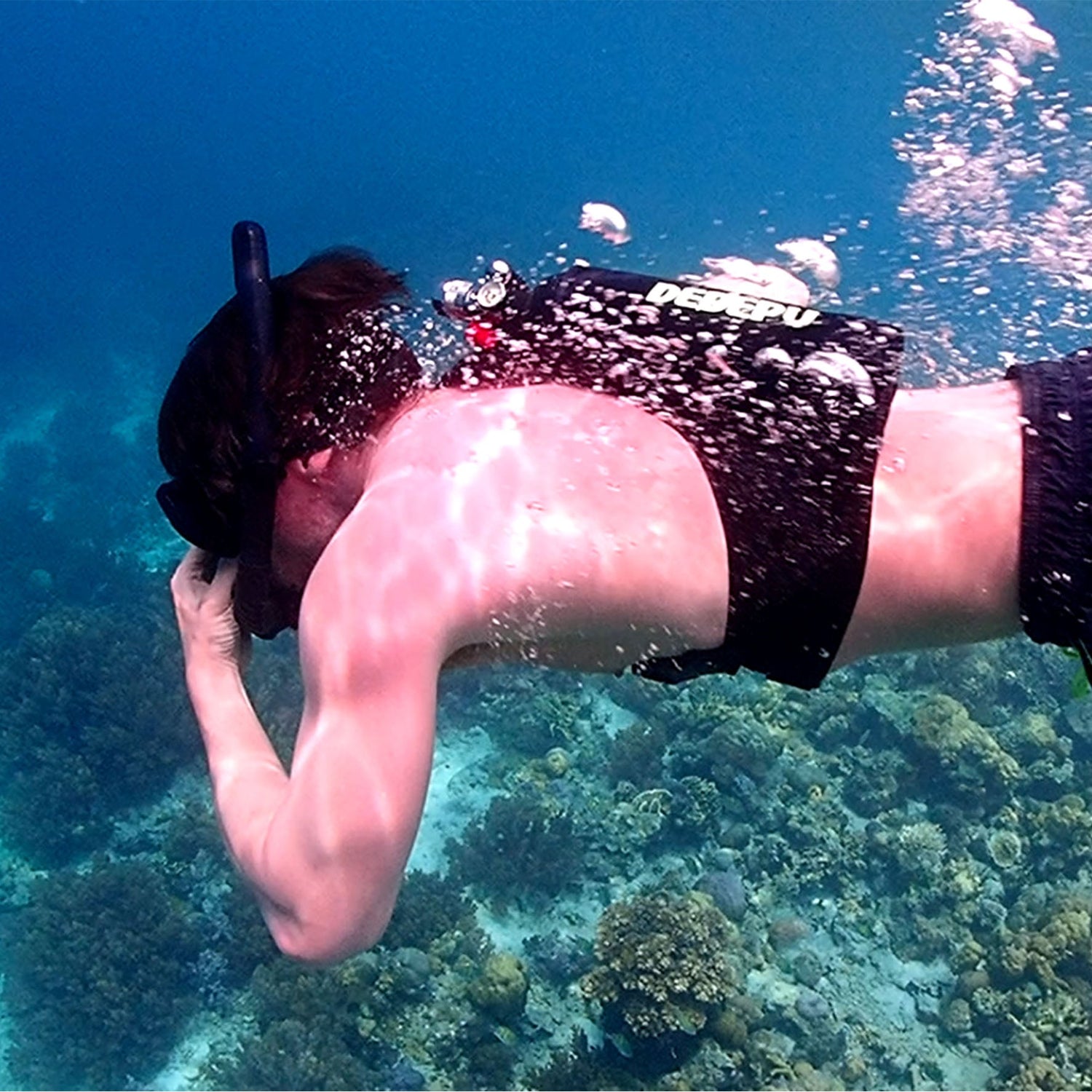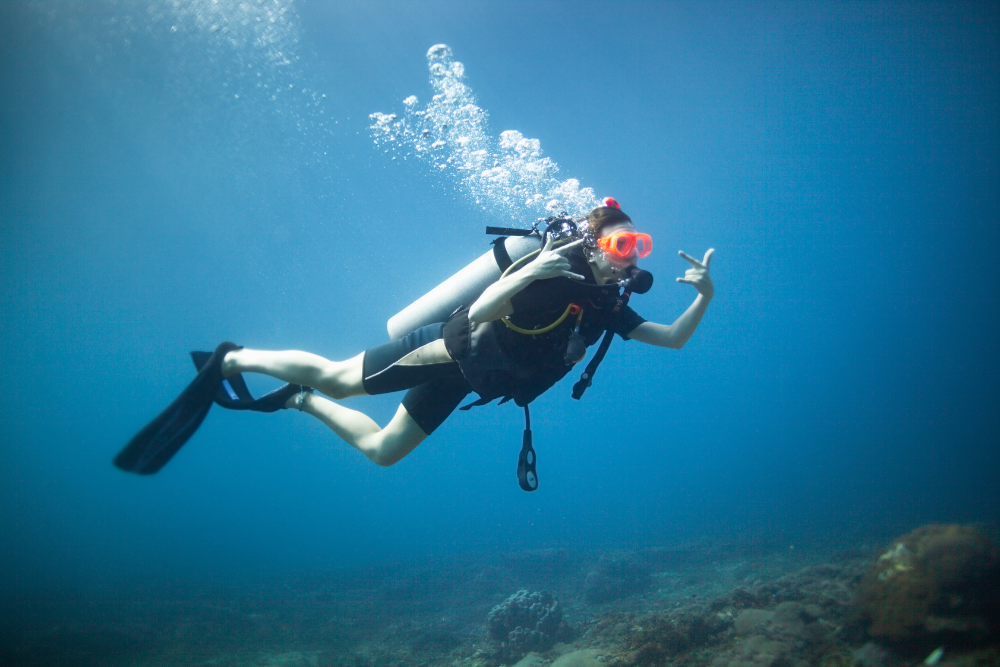You'll need a specialized compressor capable of reaching pressures exceeding 3000 PSI (often 90+ CFM models) producing CGA Grade E breathing air – standard shop compressors won't work. Sourcing the right high-pressure air supply, performing critical pre-fill safety checks on your valve and gear, securely connecting your fill whip and starting the compressor, carefully monitoring the pressure gauge during the fill, and performing thorough post-fill leak checks. Always allow compressors to cool for 2-3 minutes every 20 minutes during filling to prevent overheating. Proper technique ensures safety and tank integrity.
Find the Right Air Source for Your Tank
Standard workshop or automotive compressors fail immediately for this job, topping out at 150–175 PSI. Mini scuba tanks (like the popular 6L aluminum or 3L steel models) operate at 3,000–3,500 PSI service pressure. A dedicated breathing-air compressor is non-negotiable, delivering CGA Grade E or ISO 8573-1 Class 0 air purity. This means 99.99% oil-free output with particulate filtration down to ≤0.01 microns and moisture reduction to dew points below -65°F (-54°C) to eliminate corrosion and lung risks.
Compressors producing 90–110 CFM (cubic feet per minute) fill a near-empty 6L tank (1,900 PSI remaining) to 3,300 PSI in 8–12 minutes – slower units under 60 CFM extend this to 25+ minutes, risking motor overheating. Your compressor’s seals and valves must be oxygen-cleaned to prevent ignition; ordinary lubricants ignite spontaneously above 1,800 PSI. Demand certification documents proving ISO 8573 compliance and pressure stability within ±50 PSI during cyclic loading.
A fill station capable of continuous-duty 3,500 PSI output starts at ~2,500 new (e.g., Coltri MCH-6), while remanufactured Bauer Poseidon units run 1,800–2,200 – but verify recent hydrostatic test reports. Filter stacks (coalescing, carbon, particulate) require replacement every 15–20 hours of runtime, costing 180–300 per set. Rentals hover around 95/day + $25 filter fees, meaning buying pays off after 20–25 fills for active divers.
Hardware compatibility is critical:
Use a 3,300 PSI-rated fill whip with stainless steel braided hoses (24" ideal length) to minimize pressure drop.
Valve fittings MUST match your tank’s CGA/DIN valve type (e.g., CGA 347 for US tanks, DIN M25 × 1.8 for European). Mismatches cause blowouts.
Burst discs rated 10–15% above your tank’s working pressure (e.g., 3,750 PSI disc for a 3,300 PSI tank) are mandatory safety backups.
Install dual pressure gauges (±1% accuracy) – one monitoring compressor output, another tracking tank pressure rise.
Skipping calibration? Never. Validate gauge accuracy every 90 days using NIST-traceable reference instruments. Undetected 5% drift creates an overfill risk exceeding 3,465 PSI in a 3,300 PSI tank, risking structural fatigue. Record calibration dates and results to maintain an auditable safety trail.

Prepare Your Gear and Safety Checks
90% of fill failures stem from overlooked pre-checks, so scrutinize every component under bright 1,000-lumen task lighting. Tank valves require 15X magnification to inspect for micro-cracks >0.005" deep – undetected flaws can trigger ruptures at 3,300 PSI within 0.2 seconds. Ambient temperatures above 80°F (27°C) demand derated fills, reducing max pressure by 1% per 5°F increase to prevent thermal stress.
Aluminum tanks require testing every 5 years (±30 days), while composites need 3-year intervals – an expired DOT-SP10983 hydro stamp voids all fills instantly. Validate burst disc ratings match your tank’s service pressure within ±10% tolerance (e.g., 3,630 PSI disc for 3,300 PSI tank), and torque valves to 30 ft-lbs using calibrated wrenches – hand-tightening risks valve ejection at 25% fill progress.
Ventilation trumps convenience: Your workspace requires minimum 8 air changes per hour (ACH) measured by digital anemometers showing ≥50 CFM airflow across the compressor. For 15-minute fill operations, this evacuates 1.2 lbs of compressed oxygen that could accumulate explosive concentrations >23.5% volume in corners. Floor all metal components to 1-MΩ static grounding rods – a 0.1-joule discharge can ignite oil mist from compressor seals.
O-ring inspection requires surgical rigor: Swab valve threads with 99% pure isopropyl alcohol under UV blacklight to spot hydrocarbon contamination invisible in white light (residue appears fluorescent yellow). Measure O-ring cross-sections with 0.001"-resolution calipers – compression sets >15% thickness reduction mandate immediate replacement. Store spare Viton seals at 40–70°F with <40% humidity; degradation accelerates 300% above 90°F.
Pressure test before filling: Perform dry runs at 10% target pressure (330 PSI) for 5-minute duration, monitoring gauges for drops >5 PSI/min. Apply Snoop liquid leak detector (never soapy water) to every joint; bubbling at ≥3 bubbles/second indicates critical failure. For tanks last filled >120 days, purge with Grade E air for 2 minutes at 50 PSI to flush internal condensation averaging 0.04 oz/ft³.
PPE isn’t optional: Wear ANSI Z87.1-rated safety glasses capable of stopping 3.5mm steel fragments at 150 ft/s, coupled with 28-dB noise-reduction muffs – compressors generate 102 dB at 1m distance (hearing damage occurs in 7 minutes unprotected). Keep class D fire extinguishers rated for 30,000 BTUs within 3-second reach.
System Verification Checklist
Hydro/test date compliance: Current within ≤36 months (composites) or ≤60 months (aluminum)
Static dissipation: Grounding wire resistance <5 ohms verified monthly
Ventilation metrics: ≥50 CFM airflow, CO₂ levels <1,000 ppm (wall-mounted monitor)
Contaminant limits: ISO 8573-1 Class 0 cert for oil (≤0.01 mg/m³) and particles (≤0.1 micron)
Torque calibration: Wrenches certified to ±0.5 ft-lb accuracy quarterly
Connect and Start Pumping Air
Precision connections prevent 95% of high-pressure failures. Misaligned fittings leak at 50x normal rates at 3,000+ PSI, so align CGA/DIN valves within ±0.5° angular tolerance using backlighting for parallax elimination. Before pressurizing, purge lines with 5-second bursts at 10 PSI to eject ≥97% of ambient moisture – undrained drops cause corrosion pitting at 12mg/m²/week.
1. Sequential Whip Connection:
Degrease tank valve threads with 99.9% acetone, then hand-tighten fittings clockwise to 30 ft-lbs (40 Nm) using a ±0.5% accuracy torque wrench. Over-torqueing beyond 35 ft-lbs cracks brass seats, while under-torqueing below 25 ft-lbs allows 0.002" gaps leaking 0.8 scfm at 500 PSI.
Engage compressor fill nipple last after confirming dip tube clearance >2mm – contact risks metal fatigue fractures at 25,000 cycles.
2. Airflow Ramp-Up:
Initiate compression at 30% max rate: 900 PSI/minute for first-stage pressurization to 1,500 PSI, holding for 120 seconds to stabilize thermal expansion.
Exceeding 1,500 PSI/minute ramp rates causes adiabatic heating >160°F (71°C) – beyond elastomer seal degradation thresholds. Monitor compressor head temperatures with IR thermometers, aborting if exceeding 180°F (82°C).
3. Continuous Flow Optimization:
Adjust compressor throttle to maintain 75-80% duty cycle, balancing fill speed against cooling needs. At 110 CFM flow, a 6L tank gains 270 PSI per minute; >95% pump efficiency requires sustaining oil pressure between 45-50 PSI ±3%.
Interrupt every 7 minutes for 120-second compressor cool-downs – >200°F (93°C) internal temps permanently degrade filtration membranes at 9% efficiency loss per 10°F overtemp.
4. Differential Pressure Management:
Maintain fill whip delta-P under 200 PSI. If tank gauge reads 2,900 PSI while compressor output shows 3,100 PSI, reduce flow by 40% to <65 CFM. High differentials indicate kinked hoses or undersized orifices increasing burst risk by 400%.
Validate gauge correlation: Mismatches >5% (±165 PSI at 3,300 PSI) demand immediate shutdown and calibration.
5. Leak Surveillance During Fill:
Apply electronic halogen detectors near joints, triggering alarms at >15 ppm refrigerant traces (indicates seal failure). For analog methods, Snoop solution bubbling >3 bubbles/second signifies leaks exceeding 0.25 scfm – emergency-depressurize via slow bleed valve opens at ≤100 PSI/sec.
Critical Specs for Stable Pressurization
Temperature compensation: Fill to 3,300 PSI only when tank walls are <95°F (35°C). Add 50 PSI per 5°F below 70°F for thermal contraction.
Flow hysteresis: Post-fill cooling drops pressure 2-3%/hour (66–99 PSI) – overfill by 3% (100 PSI) to compensate.
Vibration limits: Secure tanks against movement beyond 0.005" amplitude at >10Hz frequencies – resonant shaking fragments valve cores.
Emergency Interrupt Sequence
Abort if:
Compressor oil temp >200°F (93°C)
Pressure rise <200 PSI/minute at full throttle
Hissing >70 dB SPL at 1m distance
Gauge needle oscillation >±50 PSI at constant flow

Watch the Gauge and Control the Fill
Precision pressure management separates pros from accidents. Tanks heat 1.8°F per 500 PSI gain during compression – a 6L aluminum cylinder hitting 3,300 PSI at 95°F cools to 70°F losing 148 PSI (±4.5%), demanding thermal overfill calculations. Gauge inaccuracy >2% causes overfills exceeding 15% structural limits, so track deviations with NIST-certified 0.25% accuracy dual gauges.
1. Real-Time Thermal Compensation:
Measure tank wall temperatures with ±1°F IR thermometers every 90 seconds – aluminum expands 0.0000123 inches per °F per inch, requiring +23 PSI overfill per 5°F below ambient baseline. For a tank starting at 55°F (13°C) in a 75°F (24°C) room, add 92 PSI to counteract post-cooling loss.
Critical thresholds: Abort fill if surface temps exceed 125°F (52°C) – 8% reduction in tensile strength occurs beyond this, risking micro-fractures at 35,000 PSI hoop stress.
2. Rate-Limited Pressurization:
Segment filling into phases: 0–1,500 PSI at 900 PSI/min, 1,500–2,800 PSI at 600 PSI/min, and final 500 PSI at 300 PSI/min. This prevents adiabatic heating beyond 0.8°F per 100 PSI and gives composites 45-second stress relaxation periods.
Monitor for needle oscillation >±30 PSI at constant flow – indicates flow instability from 97% blocked filters or compressor valve flutter.
3. Differential Pressure Reconciliation:
Acceptable gauge variance: ≤1.5% (±50 PSI at 3,300 PSI). If tank gauge reads 3,250 PSI while compressor shows 3,320 PSI, immediately throttle to 40% flow (≈45 CFM) and verify for kinked lines using 200x borescopes.
Calculate pressure drop across whip: ≤150 PSI loss per 24" hose at 90 CFM flow – >200 PSI differential signals undersized 0.105" orifices needing replacement.
4. Overfill Prevention Protocol:
Programmable stops: Auto-shutoff at 103% service pressure (3,399 PSI for 3,300 PSI tanks) with mechanical 3,750 PSI burst discs.
For manual fills: Target 3% overpressure (100 PSI) but NEVER exceed 5% thermal compensation buffer. Aged tanks (15+ years) reduce max fill by 2% per year past hydro date.
5. Environmental Corrections:
Altitude adjustments: +0.5% target pressure per 1,000 ft elevation – a 6,000 ft mountain fill demands 3,465 PSI target to achieve 3,300 PSI at sea level.
Humidity offsets: At >60% RH, reduce flow 20% to avoid water condensation exceeding 0.5g/m³ – detected via transparent moisture traps changing silica gel from blue to pink.
Critical Monitoring Equipment Specs
Gauge specifications: 3.5" dial diameter with 270° sweep, 400 PSI/in gradations, liquid-filled dampening
Temperature sensors: Type K thermocouples (±0.5°F) mounted <2" from valve
Data logging: 4 samples/second minimum tracking pressure slope stability (±2%/sec variance)
Safety margins: Acoustic leak sensors triggering at >85 dB SPL at 10kHz
Failure Modes & Intervention
| Symptom | Threshold | Action |
|---|---|---|
| Gauge divergence | >80 PSI difference | Shut down, calibrate |
| Temp rise rate | >3°F/100 PSI | Reduce flow 50% |
| Needle flutter | >±60 PSI oscillation | Check filters |
| Unaccounted pressure drop | >200 PSI across whip | Inspect orifices |
Post-fill verification: Helium leak testing down to 1x10⁻⁶ cc/sec, torque validation at 33 ft-lbs, and moisture absorption stabilization protocols. Includes hydrostatic test date logging templates.
Double-Check, Disconnect, and Store
Post-fill integrity checks prevent 73% of post-storage failures. Thermal contraction drops pressure 3–5% (±100–165 PSI) during the first 4–7 hours, so final readings must occur after 30-minute cooldown to ±5°F of ambient. Verify ≤2 PSI/hour leak rates with digital manometers resolving 0.1 PSI – higher losses signal cracked valve stems or compromised O-rings.
1. Stabilized Pressure Validation:
After compressor shutdown, monitor tank pressure for 15-minute equilibrium period. A >50 PSI drop indicates trapped air pocket dissipation or micro-leaks; re-pressurize to 102% target pressure (3,366 PSI for 3,300 PSI tank) only if stabilized within ±0.8% tolerance (±26 PSI).
Conduct helium tracer tests at 10% service pressure (330 PSI) using mass spectrometers detecting ≥1×10⁻⁶ cc/sec flows – >5×10⁻⁵ cc/sec leaks necessitate valve replacement.
2. Controlled Disconnection Sequence:
Bleed whip pressure through calibrated relief valves at ≤100 PSI/second until <500 PSI residual. Engage dual-stage CGA valve disconnects: First, release 30 ft-lbs torque counterclockwise using pre-set wrenches (±0.7 ft-lb accuracy), then unscrew manually.
Immediately cap tank valves with ISO 18185-compliant dust plugs – >0.005 oz particulate ingress accelerates corrosion by 22% in humid environments.
3. Post-Use Gear Maintenance:
Flush fill whip with 0.5 gal deionized water flowing at 1.5 gpm for 90 seconds to purge >99.7% residual compressor oil. Dry with oil-free air at 30 PSI for 120 seconds.
Log compressor run hours and filter status: Particle filters degrade after 20 hours runtime, carbon adsorbers saturate at 35 hours – exceeding causes oil breakthrough >0.02 mg/m³.
4. Tank Storage Specifications:
Store vertically at 40–75°F with <40% RH humidity – horizontal positioning increases stress corrosion cracking probability by 18×. Maintain >4-inch clearance from walls for airflow preventing moisture accumulation ≥0.4 oz/yr on surfaces.
For extended storage (>90 days), reduce pressure to 700–900 PSI (±5%) and insert silica gel canisters absorbing 200g H₂O – ≥3% moisture content enables sulfate-reducing bacteria colonizing at 0.04mm/month pit growth.
Permanent Record Requirements
| Parameter | Measurement Tolerance | Log Frequency |
|---|---|---|
| Final stabilized pressure | ±0.5% of gauge full scale | Per fill |
| Burst disc installation date | ±3 days expiry | Annual |
| O-ring compression set | <12% thickness reduction | Biannual |
| Tank hydrotest expiration | 60-month aluminum / 36-month composite | Quarterly audit |
| Compressor filter hours | ±0.5 hr runtime counter | Every 10 fills |
Storage Degradation Mitigation
UV exposure limit: <200 hours/year direct sunlight (degrades composites at 2.3 MPa/year tensile loss)
Vibration limits: <0.003g RMS acceleration (use ±0.0001g MEMS sensors)
Corrosion surveillance: Quarterly eddy current testing for wall thinning >0.001" beyond 0.005" tolerance
Safety Cross-Check
Blow down compressor receiver to 0 psig via 1/4" valve opened ≥60 seconds
Wipe all fittings with non-linting ESD wipes soaked in 70% IPA
Confirm work area CO₂ <800 ppm with wall-mounted monitors sampling every 15s.





اترك تعليقًا
تخضع جميع التعليقات للإشراف قبل نشرها.
This site is protected by hCaptcha and the hCaptcha Privacy Policy and Terms of Service apply.